How to Arrange Flowers for the Perfect Bouquet, According to a Florist
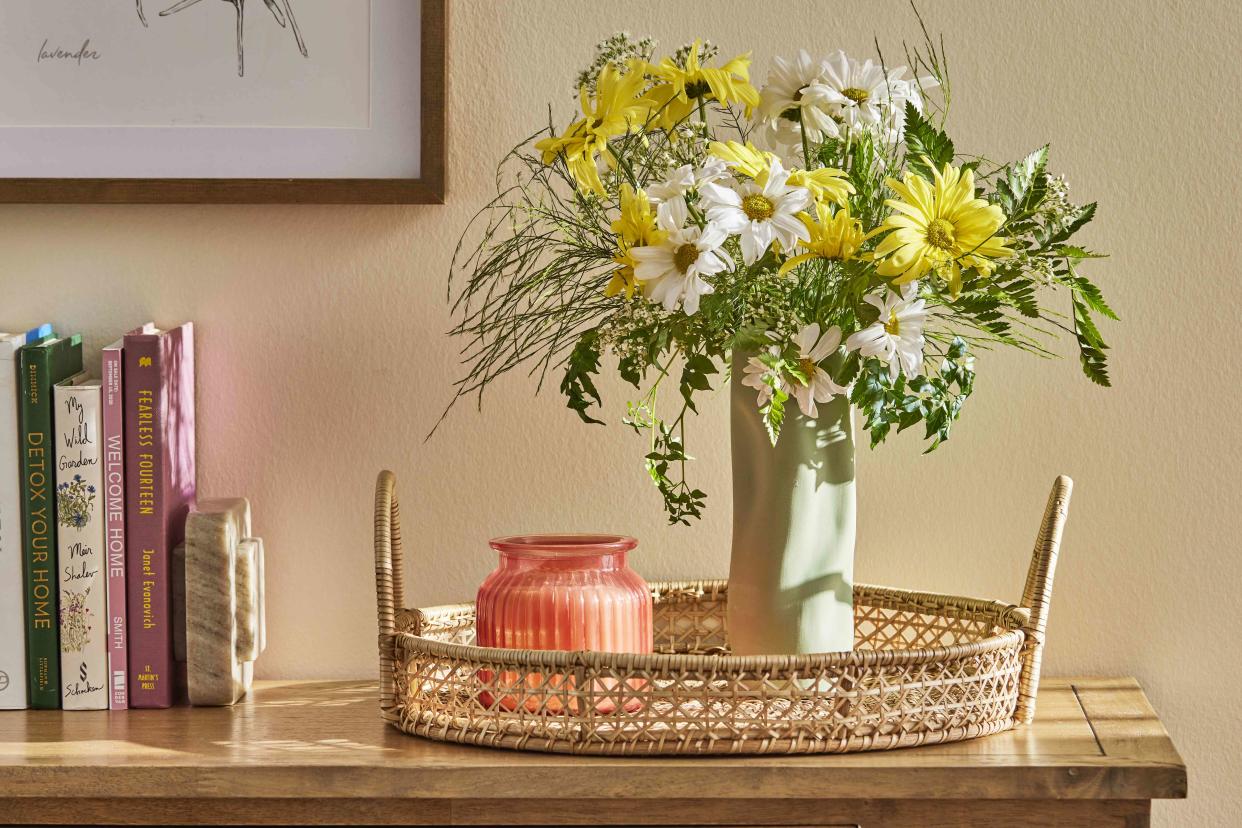
The Spruce / Jason Donnelly
You don’t need to head to the florist for a pre-made arrangement the next time you need florals for an event or special occasion. With a little help from Kathleen Varner of Petals and Props, you can take grocery store flowers and elevate them to new heights.
Here, the Birmingham, Alabama-based florist and stylist shares her best tips for creating an arrangement that’s ready for centerpiece status.
Meet the Expert
Kathleen Varner is a Birmingham, Alabama-based florist and stylist. She works with both individual clients and brands to create beautiful floral designs through her expert lens of creativity and attention to every last detail.
Want more gardening tips? Sign up for our free gardening newsletter for our best-growing tips, troubleshooting hacks, and more!
Choosing the Right Flowers
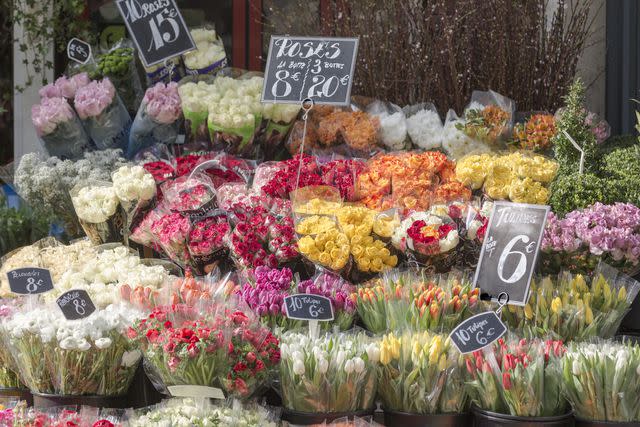
Finding the right flowers for your arrangement is like working with fresh ingredients in the kitchen. Varner says freshness and seasonality matter to pull off the brightest bouquet. Utilize in-season florals when building your bouquet—they're likely more readily available and cheaper, too.
Varner then likes to consider her palette for the arrangement. You could be creating arrangements for a special occasion or just adding some beauty and whimsy to your space, but think about what colors and designs you're looking to achieve.
A more formal occasion will typically call for a more structured arrangement, according to our florist. Intricate designs often feel more traditional whereas looser, more easygoing florals with minimal elements lend a more relaxed feel.
Finding the Perfect Vase
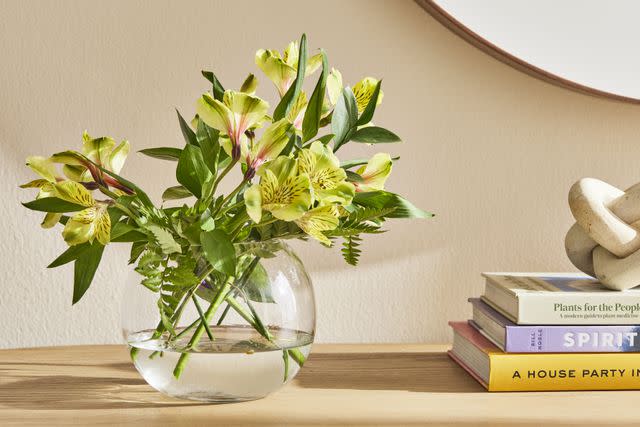
The Spruce / Jason Donnelly
Varner often chooses vases ahead of time when working with clients, but prefers to buy flowers first and select the vase accordingly when arranging flowers for her own home.
That being said, selecting the right vessel—rather than getting bogged down in the conundrum of whether flowers or the vase come first—is more important.
“If I have a tall vase, it calls for something with larger stems,” she says. “I don’t want the flower simply peeking out of the top.”
Similarly, wider vases require more filler and more voluminous blooms. “Maybe a hydrangea will help with that, for example,” Varner suggests.
Cutting Stems Like a Pro
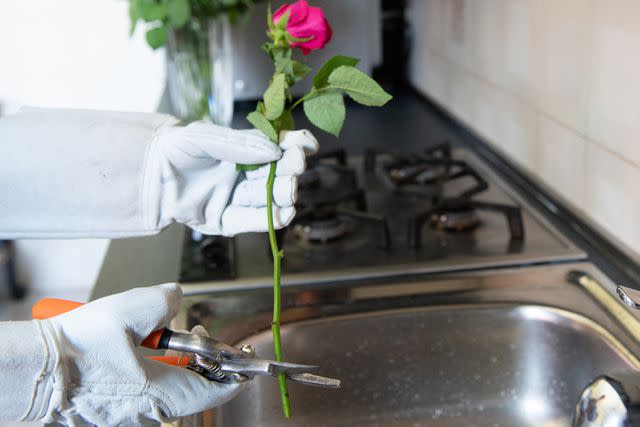
The Spruce / K. Dave
It’s important to take great care when it comes to cutting your stems. Even if you’re not ready to arrange your flowers, give the stems a small trim before placing them in water.
“If left out of water for too long, many flower stems will start to restrict water flow coming in, so give it a fresh snip when you get them,” Varner advises. “I keep them long at first and cut according to the type of vase I’m using or how much height I need.”
While some floral designers prefer a more uniform look, Varner’s arrangements typically take on a natural, movement-focused appeal.
“I don’t want every flower sitting at the same level, that’s not my style and not interesting to me,” she says. Instead, she suggests cutting flowers at different lengths to add interest and depth.
Preparing the Water
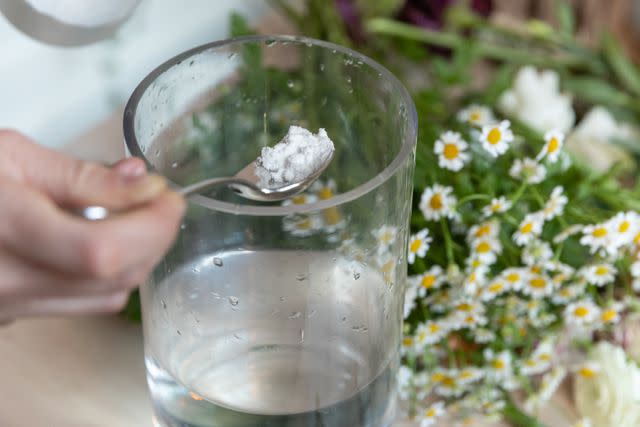
The Spruce / Leticia Almeida
It’s best to start with cool, fresh water unless you want your blooms to open up, in which case, Varner says warm water is best.
As for that little packet of flower food that’s included with your grocery store bouquet, go ahead and add it to the water as it can help extend the life of your flowers and keep the water from getting prematurely muddy.
Florist Tip
If you’ll be storing your flowers for more than a few hours and want to keep your arrangement in top shape, Varner also suggests storing it in a cool, dark place.
Start With Greenery
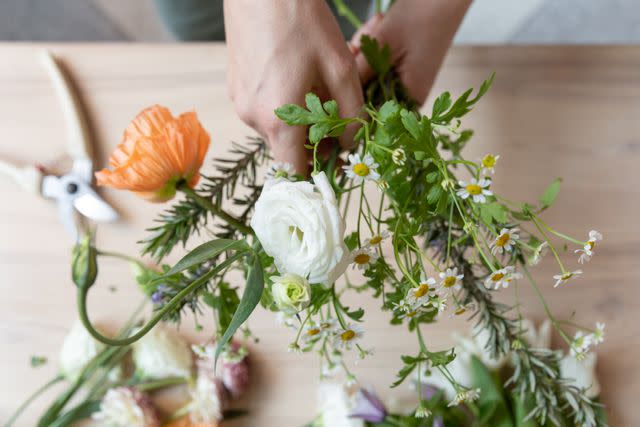
The Spruce / Leticia Almeida
“Every florist is different, but I like to start with my greenery,” Varner says. This helps her establish a strong shape that can act as the bones of the arrangement.
“Like anything else you construct, you want to have a great base to have a successful final product,” Varner explains.
While you can certainly establish a shape that is defined by your preferences, allowing the stems of the filler and other floral elements to dictate the shape of the arrangement can provide the most natural result.
Add Filler Florals
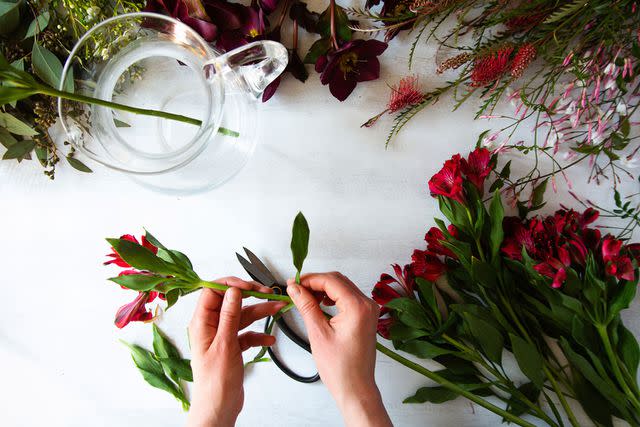
The Spruce / Alyson Brown
If you’re not using greenery, filler florals can stand in. You can add these elements to continue to build up your shape before adding the focal flowers or as a final step in order to fill in any holes you see in the arrangement.
Filler florals can add volume or lend additional visual interest through color or texture.
Add Focal Florals

The Spruce / Leticia Almeida
Focal flowers come in many varieties depending on the style of the floral arranger and the elements that are on hand. The most prominent florals in Varner’s arrangements often feature whimsical twists, delicate stems, and textural interest.
These items are typically the ones she will leave for final placement “to act as icing on top,” she says.
Arranging Tip
If you’re working with sturdier focal florals (like peonies, roses, or hydrangeas), place them just after the greenery layer is established but before filler flowers are introduced.
Tips for Beginners When Arranging Flowers
“For beginners, start with one ingredient at a time,” Varner says. She often sees beginners struggle with arrangements when they don’t have a solid plan in place.
To help, she suggests starting with one ingredient, like greenery, to help visualize how the arrangement will come together.
“You can go back at the end and add in a few more of whatever you feel is missing, but layering one element at a time helps you think through it better,” she says.
If you’re worried this straightforward approach will lead to a one-dimensional arrangement, that’s where interesting stems come into play. You can never go wrong with a large bunch of tulips, Queen Anne’s lace, or fresh-cut hydrangeas that are foraged for your yard or someone else’s.
Read the original article on The Spruce.

